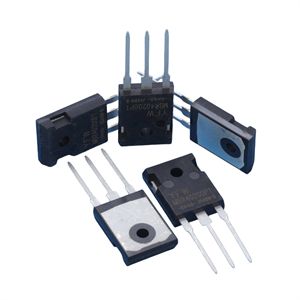Date:2024-09-23 Categories:Product knowledge Hits:445 From: Guangdong Youfeng Microelectronics Co., Ltd(YFW)
Choosing the right MOS transistor can effectively control production and manufacturing costs, and most importantly, match the product with the most appropriate component. This will fully utilize its "screw" function in the future use of the product, ensuring that the equipment achieves the highest efficiency, most stable, and longest lasting application effect.
The field-effect transistor of the inverter operates in a switching state, and the current flowing through the transistor is large. If the transistor selection is inappropriate, the driving voltage amplitude is not large enough, or the circuit heat dissipation is poor, it can all cause the field-effect transistor to heat up.
What are the reasons for the heating of field-effect transistors in inverters
1. Inappropriate selection of field-effect transistors
The field-effect transistor in the inverter operates in a switching state, generally requiring its drain current to be as large as possible and its conduction resistance to be as small as possible. This can reduce the saturation voltage drop of the transistor, thereby reducing its consumption and heat generation.
According to the field-effect transistor manual, the higher the withstand voltage value of the field-effect transistor, the greater its conduction resistance. However, for those
transistors with high drain current and low withstand voltage value, their conduction resistance is generally below tens of milliohms.
2. The driving voltage amplitude of the driving circuit is not large enough
Field effect transistor (FET) is a voltage controlled device. To reduce diode consumption and heat generation, the amplitude of the driving voltage at the gate of the FET should be large enough, and the edge of the driving pulse should be steep, which can reduce diode voltage drop and reduce diode consumption.
3. Poor heat dissipation of field-effect transistors
Due to the high consumption of field-effect transistor diodes in inverters, it is generally required to have a sufficiently large external heat sink during operation, and the external heat sink should be in close contact with the field-effect transistor's own heat sink (usually requiring the application of thermal conductive silicone grease). If the external heat sink is small or not in close contact with the field-effect transistor's own heat sink, it can cause the diode to heat up.

Previous: Classification, Structure, and Principle of MOSFET
Next: What is the role of switch diodes in network communication?